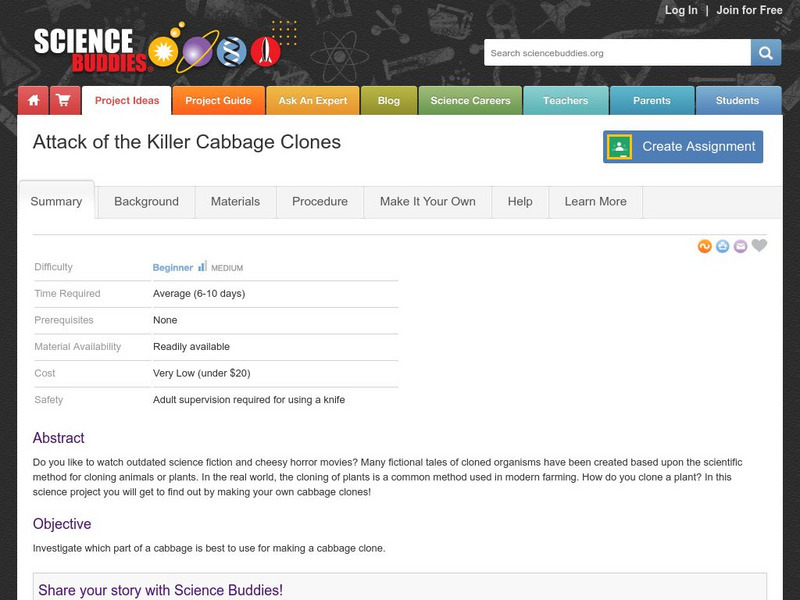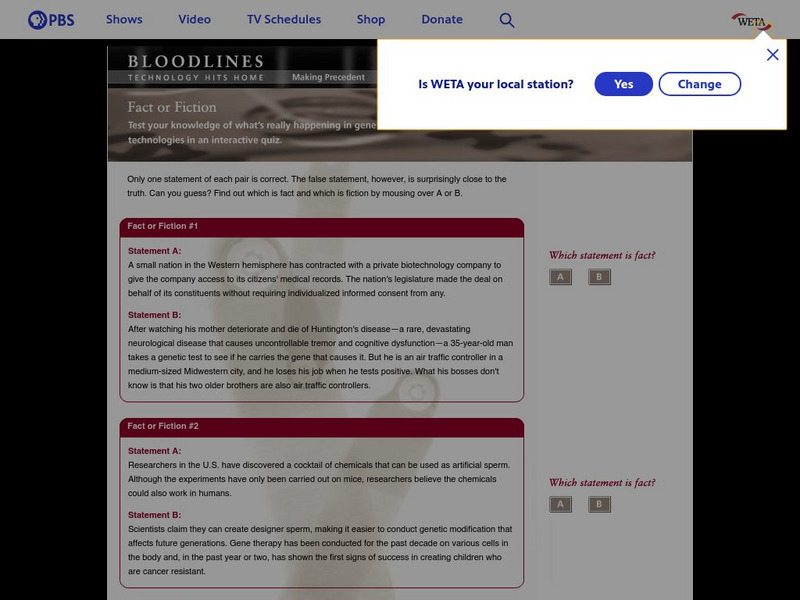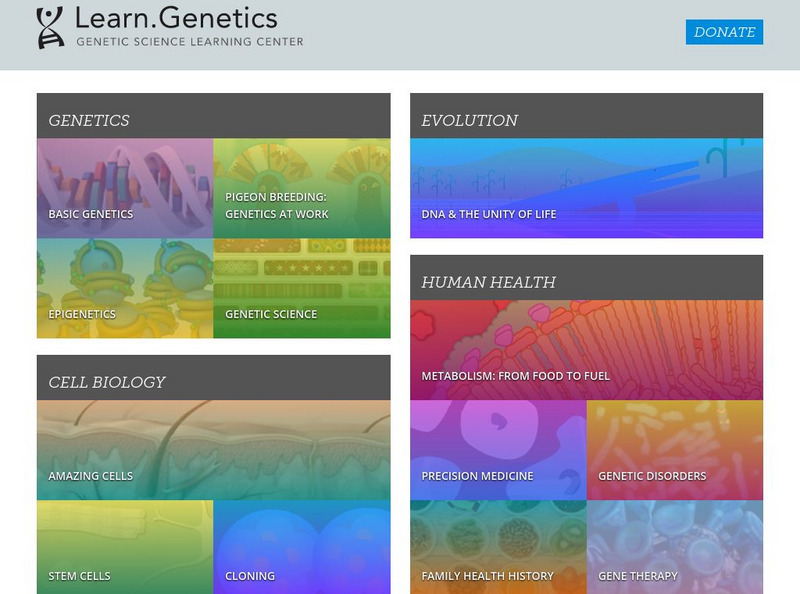Hi, what do you want to do?
Curated OER
Who Are We? An Introduction to the Life Within Our Bodies
Young scholars examine cell structure, cell division, and the basic structure of DNA. They read and discuss a case study of DNA research, answer discussion questions, role-play the process of mitosis, and complete a DNA Fact or Fiction...
Curated OER
Plants, Plants, and More Plants
Students examine several types of plants. In this plant lesson, students complete activities that require them to identify types of plants, chart plant anatomy, and explain plant propagation.
Curated OER
Solve the Case!
Students discover the habits of panthers by solving fictitious crime mysteries. In this animal life lesson, students utilize their research from previous lessons to solve mysteries in a panther activity. Students answer...
Curated OER
Breaking News English: Laboratory-Created Eggs and Sperm
In this English worksheet, learners read "Laboratory-Created Eggs and Sperm," and then respond to 47 fill in the blank, 7 short answer, 20 matching, and 8 true or false questions about the selection.
PBS
Pbs Learning Media: On Human Cloning
Three cloning experts share their opinions of cloning in these interviews from NOVA: "18 Ways to Make a Baby."
Science Buddies
Science Buddies: Attack of the Killer Cabbage Clones
Do you like to watch outdated science fiction and cheesy horror movies? Many fictional tales of cloned organisms have been created based upon the scientific method for cloning animals or plants. In the real world, the cloning of plants...
Oswego City School District
Regents Exam Prep Center: Reproduction: Asexual Reproduction
Review of asexual reproduction shows how an offspring is produced from one parent. The methods of asexual reproduction (binary fission, budding, sporulation, and mitosis) are explained briefly accompanied by illustrations.
CK-12 Foundation
Ck 12: Life Science: Cloning
[Free Registration/Login may be required to access all resource tools.] Cloning is the process of creating an exact replica of an organism. The clone's DNA is exactly the same as the parent's DNA. Bacteria and plants have long been able...
BiologyWise
Biology Wise: What Is Vegetative Reproduction
Explains the method of asexual reproduction in plants known as vegetative reproduction and what its advantages and disadvantages are.
McGraw Hill
The Mc Graw Hill Companies, Inc.: Asexual Reproduction
The succinct site covers what asexual reproduction is in plants, describes how stolons and rhizomes produce new plants, and discusses human cloning techniques.
Biology Pages
Kimball's Biology Pages: Asexual Reproduction
Site from Kimball's Biology Pages provides information on Asexual Reproduction in plants, and also in animals, where it is less common. Includes information on stems, leaves, roots, plant propagation and apomixis.
PBS
Pbs Bloodlines: Technology Hits Home
This site is a must see for any lesson or unit on biotechnology! It is a companion to the PBS video "Bloodlines: Technology Hits Home," although it can certainly be used without the video. It's a fantastic site that will challenge...
PBS
Nova: Eighteen Ways to Make a Baby
Companion website to a NOVA broadcast of the same name, Eighteen Ways documents the world of assisted reproduction. Find information on in vitro fertilization, the challenges of infertility, human cloning, advances in micro-manipulation,...
PBS
Pbs: Fact of Fiction
At this site from PBS you can challenge yourself with this quiz to see if you know what is true and what is false in genetic and reproductive technology. You'll be surprised by some of the things that we are currently able to do with...
University of Illinois
University of Illinois Extension: Plantenstein Is the Suspect!
Detective Le Plant has discovered that one plant can produce many other plants. He needs you to help him find out how this happens. Follow along and learn about the parts of flowers and reproduction. Along the way, you will be quizzed!
How Stuff Works
How Stuff Works: How Evolution Works
Bacteria reproduce asexually. This means that, when a bacteria cell splits, both halves of the split are identical -- they contain exactly the same DNA. The offspring is a clone of the parent.
BBC
Bbc: Gcse Bitesize: Mitosis and Cell Specialisation
This lesson focuses on cloning. Plants can make identical copies of themselves by asexual reproduction, for example by tubers and runners. Humans have been cloning plants for years and have recently started to develop techniques to clone...
PBS
Pbs Bloodlines: Making Precedent
Excellent site where students are challenged to read several case studies and make choices about what they would do in the situation. After they choose they are presented with some of the consequences that their decision may produce in...
University of Utah
University of Utah: Genetic Science Learning Center: The Basics and Beyond
This website offers a clear definition of the science of Genetics, highlighting DNA and genes. There is a neat, easy-to-understand animated tour of the basics and an opportunity to go inside an animated cell. Student can build a DNA...




















